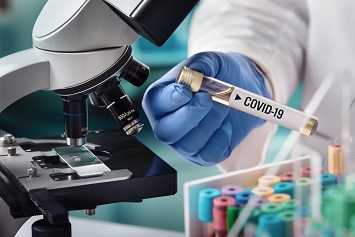The EPA has announced that its Science Advisory Board (SAB) will significantly ramp up its research into the human and environmental health impacts of the novel severe acute respiratory syndrome coronavirus 2 (SARS-CoV-2) that causes COVID-19.
The Agency has issued a notice that the SAB intends to convene a panel of experts to provide rapid advice on scientific and technical issues related to the COVID-19 pandemic, as well as opportunities for current and future EPA research activities that might enhance and inform the Agency’s current and future responses to SARS-CoV-2. According to the notice, the EPA will hold two public telephone conferences—on April 28 to review the SAB’s research activities and on May 20 to review a draft report by the SAB’s review panel.
The scope of the EPA expectations of the SAB is spelled out in several general charge questions, as well as a lengthy list of specific questions related to different research categories.
“SAB comments will inform and help guide the Agency as it enhances its capabilities to address the environmental and human health impacts of SARS-CoV-2,” says the EPA.
Scope of Activities
The research categories and key questions include:
- Environmental disinfection. Key question(s): How effective are devices such as UV, ozone generators, or steam devices at reducing or eliminating exposure to SARS-CoV-2 from surfaces or objects?
- Environmental sample collection methods. Key question(s): What methods (e.g., swabs, wipes, material types) are most appropriate for surface sample collection for SARS-CoV-2?
- Environmental sample analysis. Key question(s): What is the current laboratory capability and capacity for molecular and viability analysis for SARS-CoV-2, and what method improvements can be made to increase capability/capacity? How does this reflect on the required environmental sample analysis needs?
- Environmental stability/persistence on surfaces. Key question(s): How long does SARS-CoV-2 remain active on frequently touched surfaces (e.g., escalator and subway handholds, railings, door handles, etc.) as a function of environmental conditions? How does temperature and humidity impact persistence indoors?
- Environmental exposure. Contact transmission and inhalation and/or oral exposure to respiratory droplets produced when an infected person coughs or sneezes are thought to be the primary routes of transmission. Key question(s): How effective are sampling and analysis methods for assessing potential risk from environmental exposure? What improvements are necessary? What measures can be used to mitigate environmental exposure to SARS-CoV-2? Which exposure scenarios pose the highest potential risk for individuals self-isolated at home (e.g., shopping, handling mail, outdoor exercise, etc.)?
- Water/wastewater. Based on existing Centers for Disease Control and Prevention (CDC) information, there is no indication that water or wastewater exposures pose a significant risk to human health. Key question(s): What uncertainties exist and what refinements are necessary to more accurately quantify SARS-CoV-2 in the various water types (i.e., drinking water, wastewater, surface water, and groundwater)?
- Air. Key question(s): How long does the virus remain viable in ambient air (as a function of temperature, humidity, UV, and precipitation)? Can air vented outside from contaminated indoor environments carry significant infectious viral load outdoors, particularly in dense urban environments, or, in cases of reentrainment of exhausted air, back indoors?
- Environmental factors affecting transmission and severity of COVID-19. Key question(s): Does exposure to air pollutants, including wildland fire smoke or other air pollutants (e.g., ozone, particulate matter, diesel exhaust, pollen) increase the susceptibility to respiratory viruses like SARS-CoV-2 or exacerbate existing COVID-19 infection?
- Human health risk factors affecting transmission and severity of COVID-19. Key question(s): Are there particular health risk factors (aside from preexisting conditions) that make certain individuals or subpopulations more sensitive or vulnerable to COVID-19 (e.g., characteristics of the built environment, seasonal allergies, chronic exposure to aerosolized pollutants, or demographic conditions)?
Other categories in the SAB’s charge document address personal protective equipment (PPE) (e.g., What procedures are recommended for disinfecting PPE for the purposes of reuse?) and health risks from exposure to disinfectants (e.g., measurements on residue transfer for disinfectants applied to toys and floor surfaces, the amount of mopping solution used, and the volatilization of disinfectants into indoor air would provide useful information for assessing the risk of children and other susceptible populations).

